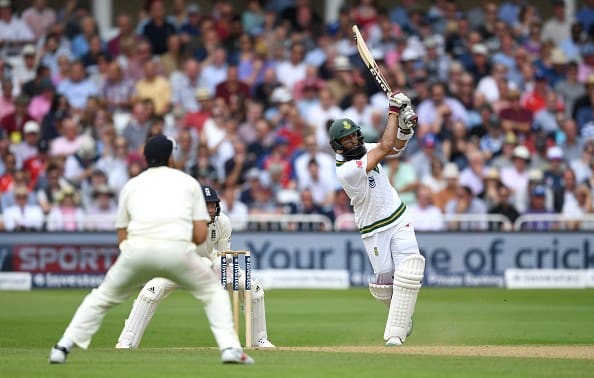Gritty performances by the Proteas’ top six at Trent Bridge bode well for a crucial contest at the Oval, writes JON CARDINELLI.
The stats that matter make for damn fine reading if you’re a South African cricket fan. The Proteas scored 335 in the first innings at Trent Bridge and then 343-9 in the second. Ultimately, they set England a gargantuan target of 474 and went on to claim an emphatic 340-run victory.
The result, as well as the margin of victory, will be remembered for years to come. One would hope that cricket fans of both teams remember just how favourable conditions were for the bowlers and just how hard the South Africans fought to build partnerships of substance.
REPORT: Proteas thrash England to level series
Captain Faf du Plessis asked his charges for a more measured and determined batting performance in the wake of the side’s woeful display at Lord’s. The top six certainly answered the skipper’s call at Trent Bridge.
South Africa were in a strong position at 220-5 when No 7 Vernon Philander came to the wicket. More should be read, however, into how the Proteas went about blunting the England bowling assault and occupying the crease.
England duo Stuart Broad and Jimmy Anderson didn’t exactly bowl poorly. Broad troubled the visitors with the delivery that moved back into the right-handed batsman. Anderson swung the ball both ways.
On day one, after South Africa won the toss and chose to bat, Heino Kuhn batted for over two hours and Hashim Amla for nearly four. It’s fair to say that the 113-run partnership between Amla and Quinton de Kock set South Africa up for that total of 335 in the first innings; and yet one cannot deny that Kuhn and Amla played game-shaping roles by ensuring that the Proteas made it through the first session without sustaining too much damage.
Dean Elgar batted for a little more than three hours in the second dig. Amla’s vigil spanned close on five hours, while Du Plessis stuck around for more than three.
The big partnerships were brilliantly paced. Elgar and Amla scored at nearly four runs per over in the course of their 135-run stand. And yet there were times early on day three when the pair had to tough it out.
Amla and Du Plessis played watchfully in the first hour after lunch and scored only 28 runs. Despite the bowler-friendly conditions, it was the England bowlers and fielders who appeared to be under pressure for most of South Africa’s innings. Again, the top six batsmen did well to set the platform, and by the time Philander arrived the score was a healthy 253-5.
A balance in approach paid dividends at Trent Bridge. The selectors also got it right in moving De Kock up to No 4.
A top six that reads Elgar, Kuhn, Amla, De Kock, Du Plessis and Temba Bavuma will offer South Africa a host of options going forward. De Kock and Amla have the ability to take the game away from the opposition. Evidently, each member of this top six has the appetite for a fight, even when conditions aren’t ideal for batting.
That said, it will be interesting to see what changes are made ahead of the third Test at the Oval. One would expect the same balanced approach by the batsmen. One would expect this top six to be retained.
Fast bowler Kagiso Rabada should come straight back into the side after serving a suspension. The selectors may also be tempted to play a seventh specialist batsman, although this decision would lead to yet another bowler who featured at Trent Bridge sitting out.
Theunis de Bruyn played well for his 48 in the first innings at Lord’s and would be the obvious candidate if the Proteas decided to reinforce their batting lineup. Pitch conditions at the Oval are unlikely to mirror those at Trent Bridge.
Photo: Gareth Copley/Getty Images




